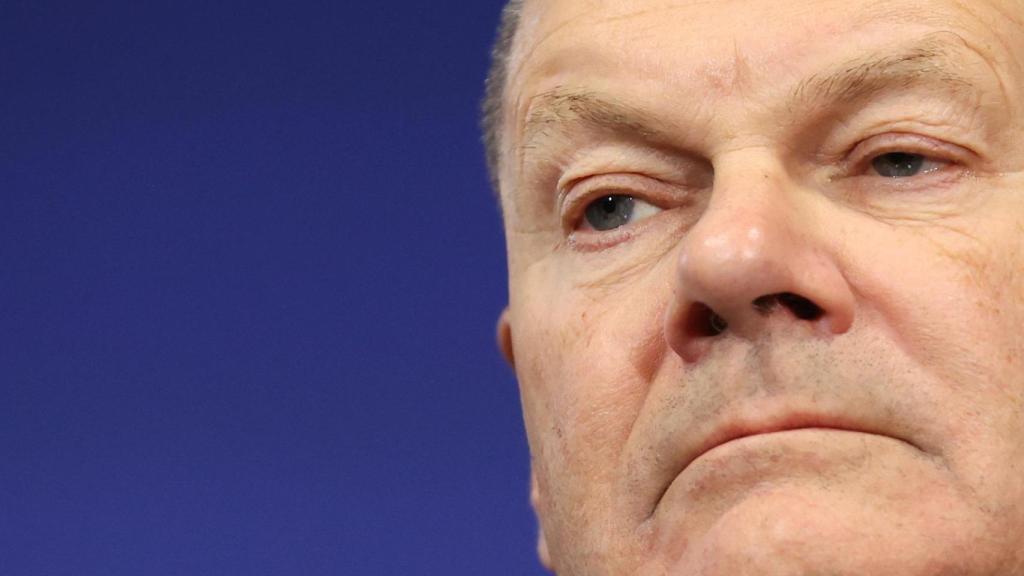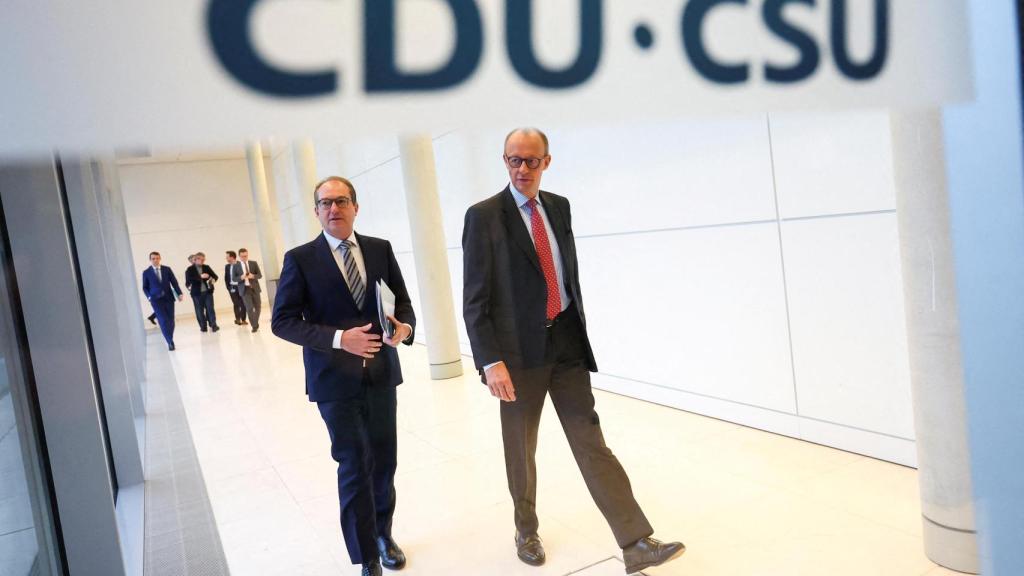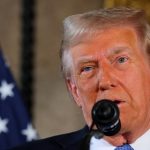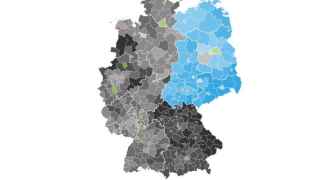Last Wednesday, while the first reactions to Donald Trump’s overwhelming victory in the United States presidential elections were coming from all over the world, the heart of Europe trembled for the implosion of the German government. It was already night when Chancellor Olaf Scholz announced the dismissal of his Finance Minister, the liberal Christian Lindner, for “having betrayed his trust” too many times. Or rather: for not being able to reach an agreement with him on the 2025 budgets and the economy in general. “You can’t govern like that”the president stated in a speech full of criticism against his former partner.
Thus, after days of rumors about his possible fall and three years in power, he collapsed the traffic light coalitionas it is known by the colors of the three parties that make it up (red, yellow and green). Probably, no one expected that Europe’s first economy would open a period of uncertainty at such an inopportune time, in the midst of a recession and just after it became known that the next occupant of the White House intends, among other things, to impose tariffs on European products and end aid to Ukraine. Now, what everyone seemed to foresee was that the pact between social democrats (SPD), green (Die Grünen) and liberals (FDP) would end up blowing up sooner or later. And so it has been.
“It was a very bad marriage that has been enduring out of historical responsibility, to confront the protectionism that followed the pandemic or the Russian invasion,” he explains. Hector Sanchez Margalefresearcher at the Barcelona Center for International Affairs (CIDOB) and expert in European policies. However, the analyst points out, “the divorce had been seen coming for a long time” due to the constant internal disputes.
In May, 62% of Germans felt very dissatisfied with the work of the first tripartite since the post-war, according to an IPSOS survey. In September, only 16% of Germans said they were happy with the performance of the federal government. In November, the partners were the ones who concluded that the alliance was unsustainable.
The beginning of the end? The beginning
At first, the coalition enjoyed success and popularity. It was born in September 2021, when the Social Democrats won the elections, but with just two points above the CDU/CSU Christian Democrats. By first time in 70 years The two parties that traditionally alternated power in Germany, the SPD and the CDU, did not arrive together at 50% of the votes. That opened a new political scenario. And far from repeating a grand coalition or past alliances, the Social Democrats, led by Scholz, managed to reach an agreement with the Liberals and Greens, who had achieved very good results that year. The promise with which this unprecedented tripartite took power was to “take charge of the future” and “bet on progress.”
“In the German political tradition minority governments are a rare bird; They are always the result of large majorities in parliament, which partly explains why those parties reached an agreement then,” says Alberto Bueno, professor of Political Science at the University of Granada and the University of Leipzig. But also, the expert clarifies, this change had a lot what to do with the end of the Merkel era. “There was a need for new parties to arrive, despite the fact that Scholz came from the previous Executive and despite the fact that there were already discrepancies between the three partners,” he maintains.
The distance between the formations was evident since the union, but if the beginning of the end had to be marked it would be Russian invasion of Ukraine in February 2022. “The coalition did not even have time to have a honeymoon,” says Sánchez Margalef. “It was a shock structural at the level of foreign policy, but also commercial, energy and economic policy, which stressed the seams to the maximum of the tripartite,” Bueno agrees.

German Chancellor Olaf Scholz holds a press conference.
Then, in a historic twist, Germany decided to skyrocket its military spending and give up Russian gas. Not before the three partners argued about it. On the one hand, the Greens, led by the party leader, Robert Habeckand the Minister of Foreign Affairs, Annalena Baerbockthey wanted to stand firm against Moscow and send weapons to Ukraine. On the other hand, the social democrats advocated being more cautious. And since the Ostpolitik (the policy of rapprochement of the Federal Republic of Germany towards the Eastern bloc promoted by Chancellor Willy Brandt in the 1970s), have espoused a more Russophile position. As an example, his support for the construction of the Nord Stream 2 gas pipeline.
This disagreement was the first of many. Having given up Russian energy, on which it was heavily dependent, Germany was faced with the herculean task of finding new supplies to avoid a energy security crisis. This put a party like the Greens, traditionally with an anti-nuclear stance but forced to respond quickly to an emergency, between a rock and a hard place. Added to this were other problems, such as the growing disinterest of China, its largest trading partner, in products. Made in Germany or the crisis in the German industrial sector, especially in the powerful automobile sector. Thus, in the last two years, the country has gone from being the locomotive of the European economy to become almost the caboose.
The economy, area of friction
Precisely, what has caused the German traffic light government to completely collapse has been the disagreements about how to promote the stagnant and weakened economy of the country. “It is the area where there is the most divergence between the parties, and the perfect storm has been created for everything to end up exploding,” explains Bueno with EL ESPAÑOL.
However, the fight in this area goes back a long way. Already in 2023, in the midst of disputes over the federal budgets, the German Justice dealt a hard blow to the Government by ruling that could not reallocate 60,000 million euros of debt not used during the pandemic to a climate fund. That left the tripartite with few options to promote energy independence projects. Especially because it was put the brake on the debt, the debt limit enshrined in the German Constitution and is currently in place.
“The war in Ukraine was a structural shock that stressed the seams to the maximum of the tripartite”
The general budgets for 2025 had to arrive for everything to blow up. And the recipe for the liberals (recocuts massive spending and tax cuts) collides head-on with that of the social democrats and the greens, willing to lift the debt brake and increase public spending.
These irreconcilable differences are what led the chancellor on Wednesday to announce the departure of his partner and announce that HE would present a motion of confidence for foreseeably lose it –since it does not have a parliamentary majority– and thus force the call of early elections. That is the only way left, since neither Parliament can dissolve itself, nor can the chancellor do so.
lto date chosen by the head of government is January 15which places the electoral appointment in the month of March. Until then, without the Liberals, the Government is in a minority and faces the challenge of approving the 2025 budget in the Bundestag.
Asunto personal… y electoral
El anuncio de ruptura se produjo en una comparecencia en la que Scholz llamó al Lindner “egoísta” y “cuadriculado”, y el liberal reprochó al jefe de Gobierno haber planteado medidas “flojas” y “sin ambición”. Varios medios de comunicación alemanes, como el periódico Frankfurter Allgemeine Zeitung, han interpretado la dureza de estas palabras como una disputa que va más allá de lo ideológico y que roza lo personal. Personal, además de electoral. Porque detrás del apagón del semáforo alemán 11 meses antes de que se agote la legislatura hay también un cálculo electoral.
“Quizá Scholz cree que los liberales van a cargar con la caída del Gobierno y que él va a recuperar la iniciativa política, si es que alguna vez la ha tenido”, sostiene Sánchez Margalef. Un movimiento arriesgado si se tiene en cuenta que las encuestas pronostican un enorme retroceso de los socialdemócratas. “Busca dar un golpe de efecto”, añade el experto del CIDOB.
Por su parte, el envite de los liberales podría leerse como un acto de supervivencia. En las elecciones regionales en Sajonia y Turingia en septiembre, los liberales (y los verdes) obtuvieron unos pésimos resultados. Consiguieron sólo representación en uno de los dos parlamentos. Ese temor a quedarse sin representación en el Bundestag ha llevado a Lindner a atrincherarse en su línea presupuestaria, pensando que quizá así pueda recuperar el apoyo del electorado liberal. “Igual simplemente trata de anticiparse para no seguir perdiendo”, considera Alberto Bueno, de la Universidad de Granada.

El líder de la oposición alemana, Friederich Merz, da una declaración antes de una sesión del Bundestag, en Berlín,
Si alguien sale ganando con este caos político es indudablemente la oposición. Según un sondeo publicado por el instituto demoscópico IPSOS el 7 de noviembre, si las elecciones se celebraran este mismo domingo, la coalición democristiana CDU/CSU, liderada por Friederich Merz, ganaría con un 32% de votos. En segunda posición quedaría, con un 18%, la extrema derecha de AfD, que arrasó en los comicios regionales.
El tercer lugar lo ocuparían los socialdemócratas del SPD con un 15%, seguidos de los verdes con un 11% y el BSW –el recién fundado partido antiinmigración de izquierdas– con un 8%. A la cola estarían los liberales del FDP, que rozarían el 5%, el mínimo para entrar en el Bundestag. Una perspectiva muy preocupante para el que ha sido el principal partido bisagra de gran parte de los gobiernos democráticos de Alemania.
Con todo, aunque aún es pronto para saber qué pasará a partir de enero, resulta difícil no pensar en la crisis de 1982, cuando los liberales – también por motivos de política económica– abandonaron la coalición con los socialdemócratas de Helmut Schmidt y acabaron haciendo canciller al democristiano Helmut Kohl.






![[Img #74676]](https://thelatestnews.world/wp-content/uploads/2024/12/Laser-artificial-neuron-150x150.jpg)







Add Comment